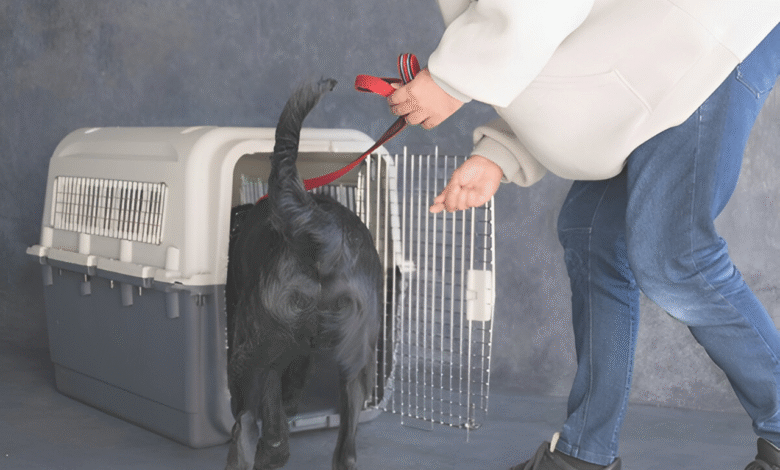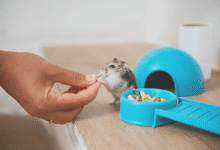
Crate Training 101: A Beginner’s Guide to Happy Dogs
Crate training your dog? Discover expert tips for stress-free crate training in our beginner's guide to a happy, well-adjusted pup.
Crate training is one of the most effective ways to help your dog feel safe, secure, and well-behaved in your home. Whether you have a new puppy or an adult dog, a properly introduced dog crate becomes their personal den a cozy retreat where they can relax and feel protected. Beyond providing comfort, crate training aids in housebreaking, prevents destructive behaviors, and makes travel and vet visits less stressful for your furry companion.
While some pet owners worry that crating is cruel, the truth is that dogs are naturally den animals and often seek out small, enclosed spaces. When done correctly, crate training strengthens the bond between you and your dog by establishing trust and routine. This guide will walk you through everything you need to know from selecting the right crate to troubleshooting common challenges so you and your pup can enjoy the many benefits of crate training with confidence.
Crate Training 101
Why Crate Training is Beneficial for Dogs
Crate training offers numerous benefits for both dogs and owners. Dogs are naturally den animals, meaning they instinctively seek small, enclosed spaces for safety. A properly introduced dog crate mimics this environment, reducing stress and preventing destructive behaviors like chewing or excessive barking. For pet owners, crate training simplifies housebreaking by teaching dogs to hold their bladder. It also ensures safety when you’re away, preventing accidents or injuries. Additionally, crates make travel and vet visits less stressful since your dog will already be comfortable in confined spaces.
Choosing the Right Crate for Your Dog
Selecting the right dog crate is crucial for successful crate training. The crate should be large enough for your dog to stand, turn around, and lie down comfortably but not so big that they can use one end as a bathroom. Wire crates are popular for ventilation and visibility, while plastic crates offer more privacy and are ideal for travel. For growing puppies, consider an adjustable crate with dividers. This allows you to expand the space as your dog grows. Soft-sided crates work well for small, calm dogs, but they may not be suitable for chewers. Always prioritize durability, safety, and comfort when making your choice.
Introducing Your Dog to the Crate
The key to successful crate training is making the crate a positive space. Start by placing the crate in a quiet area with the door open, allowing your dog to explore freely. Encourage them with treats, toys, and soft bedding to create a welcoming environment. Never force your dog inside instead, use positive reinforcement. Toss treats near the crate, then gradually inside, praising them for entering. Feeding meals near or inside the crate can also build positive associations. Patience is essential some dogs adapt quickly, while others need days or weeks to feel comfortable.
Establishing a Crate Training Routine
Consistency is vital in crate training. Begin with short sessions (5–10 minutes) while you’re home, gradually increasing the duration. Use a command like “crate” or “kennel up” to signal it’s time to enter. Reward calm behavior with praise and treats. Avoid using the crate as punishment, as this creates negative associations. Instead, make departures and arrivals low key to prevent anxiety. A structured routine helps dogs understand when to expect crate time, reducing resistance over time.
Dealing with Common Crate Training Challenges
Some dogs whine, bark, or resist crate training initially. If your dog cries, wait for a moment of quiet before letting them out rewarding silence reinforces good behavior. For separation anxiety, try leaving an item with your scent or using white noise to soothe them. If your dog refuses to enter, try higher-value treats or feeding meals inside. Never scold or force them, as this increases fear. For persistent issues, consult a professional trainer to ensure you’re using the right approach.
How Long Should a Dog Stay in a Crate?
Puppies under six months shouldn’t stay in a dog crate for more than 3–4 hours at a time due to their small bladders. Adult dogs can typically handle 6–8 hours, but longer periods can lead to anxiety or discomfort. Always ensure your dog gets plenty of exercise and mental stimulation outside the crate. If you work long hours, consider a dog walker or pet sitter to provide breaks. Remember, a crate is a tool not a permanent confinement solution.
Transitioning Out of the Crate
Signs Your Dog is Ready
Look for consistent good behavior like no accidents, no destructive chewing, and calm behavior when left alone. If your dog voluntarily rests outside the crate and shows no anxiety, they may be ready for more freedom.
Start With Short Trial Periods
Begin by leaving your dog uncrated for just 10-15 minutes while you’re home. Gradually increase this time as they prove they can handle it. Always supervise initially to catch any regression in behavior.
Create a Dog-Proofed Space
Before full freedom, designate a safe area with their bed, toys, and water. Use baby gates to block off unsafe zones. Remove temptations like shoes or electrical cords that might trigger chewing.
Keep the Crate Available
Even after transitioning, leave the crate accessible with the door open. Many dogs continue using it as their safe space. This ensures they still view it positively if needed for travel or vet visits.
Monitor and Adjust as Needed
If you notice accidents or destructive behavior, scale back to part-time crating. Some dogs do better with overnight freedom first, while others handle daytime better. Be prepared to revisit crate training if necessary.
Maintain Routines and Rules
Stick to your usual walking, feeding, and play schedules. Consistency helps your dog understand expectations even without the crate. Reward calm behavior to reinforce good habits in their new freedom.
Read More: How Often Should You Bathe Your Dog? Vet-Backed Advice
Conclusion
Crate training, when done with patience and positivity, can transform your dog’s behavior and overall well-being. By providing a secure, den-like space, your dog crate becomes a sanctuary where your pup feels safe and comfortable. Whether you’re housebreaking a puppy, preventing destructive chewing, or preparing for travel, a properly introduced crate helps establish routines and reduces anxiety for both you and your furry friend.
Remember, the key to successful crate training lies in consistency, positive reinforcement, and understanding your dog’s unique needs. Some dogs adapt quickly, while others may need more time always move at your pet’s pace. With the right approach, your dog will soon view their crate as a cozy retreat rather than a restriction. Ultimately, crate training isn’t just about confinement it’s about creating a happier, more confident companion who thrives in your home.
FAQs
How long does it take to crate train a dog?
Most dogs adjust within a few weeks, but some may take longer depending on temperament and past experiences.
Is crate training cruel?
No, when done correctly, crate training provides dogs with a safe, den-like space and reduces anxiety.
Should I crate my dog at night?
Yes, crating at night helps with housebreaking and prevents nighttime mischief.
What if my dog hates the crate?
Use treats, toys, and gradual exposure to build positive associations—never force them inside.
Can adult dogs be crate trained?
Absolutely! Older dogs can learn to love their crate with patience and consistency.







